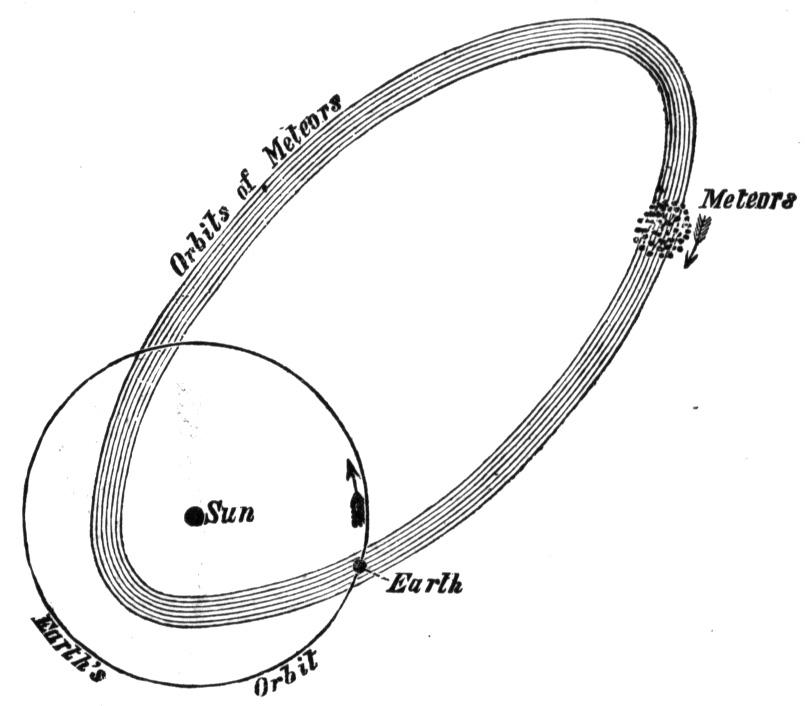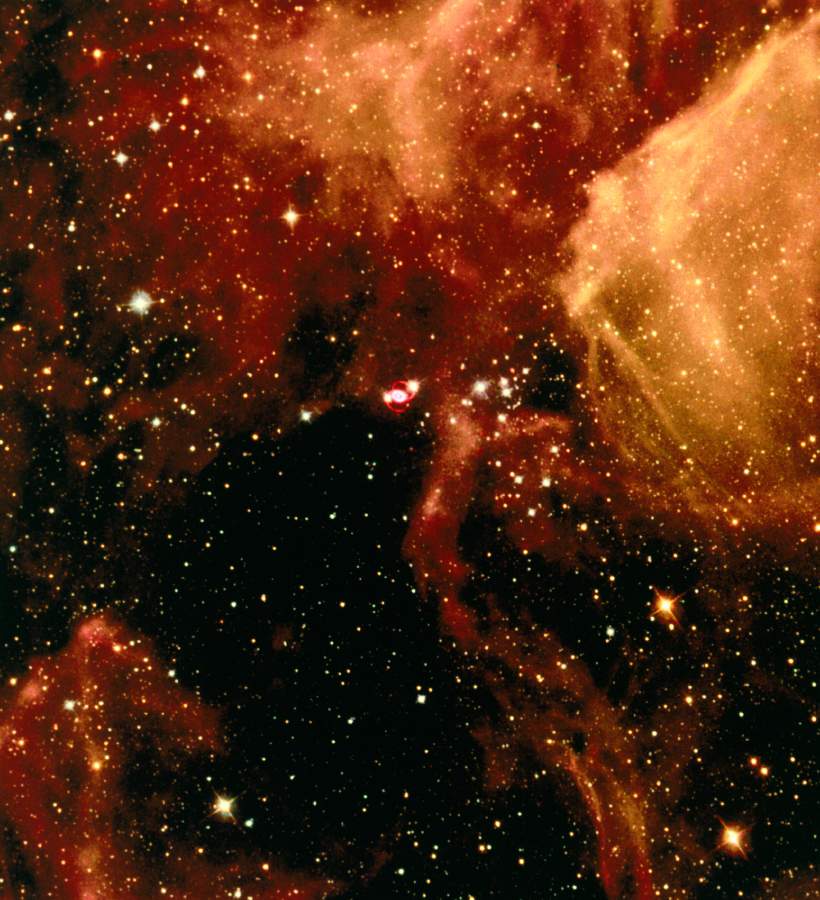Stars and Constellations |
What we commonly call "shooting stars" aren't really stars at all. They are tiny particles that were swept into the Earth's atmosphere from space, called meteors. Meteor showers can be observed any night of the year in a dark country sky. One may see around a dozen per hour on any given night of the year. Yet on some nights, depending on where the Earth is in orbit around the Sun, you can come across streams of them. This is eplained by the chart above. |
Constellations |
Shooting Stars |

For centuries man has watched the bright patterns of stars in the sky. At your first glance at these miraculous formations of stars, called constellations, they may look like a jumble of twinkling dots. But with practice you can pick out many shapes of the 88 constellations. Dividing stars into constellations helps to find, and recognize different stars. Most constellations were named after characters or objects in ancient Greek myths. Such as Hercules, named after a Greek hero, or Coma Berenices, who was said to have beautiful hair. One day she cut all of her hair off and the god Jupiter placed it among the stars. |
Life of Stars |
Stars have a long lifetime, way too long for us to observe a single star's life cycle. Instead we study stars at different periods in their lives and build a picture of it. On a dark night you might notice bands of darkness scattered along the Milky Way. It is vast clouds of gas and dust that are only visible when they block out the light from more distant stars. These giant clouds previde the raw material needed to make new stars. If you look Orion's sword through bioculars, the middle star will appear misty. A telescope will show a cloud of gas brightly lit by a group of bright blue stars. These are the latest in a series to be born from the gas permeating the sky in Orion. Their formation was perhaps triggered by a star from an earlier generation has exploded as a supernova. It probably happened within the last few million years. A stars lifetime depends largely on how massive it is. The more mass it gains, the closer it gets to its ultimate fate as a white dwarf, neutron star, or even black hole. Once our Sun becomes a red giant, it will live about a billion years. As it exhausts its nuclear fuel, it will cast off its outer layers to form a planetary nebula that will surround its blazing hot core. Slowly the core will fade away over millennia as a cooling white dwarf. This is somewhat like the fate of most stars; however, very massive stars may end their lives far more spectacularly in a supernova explosion. |

